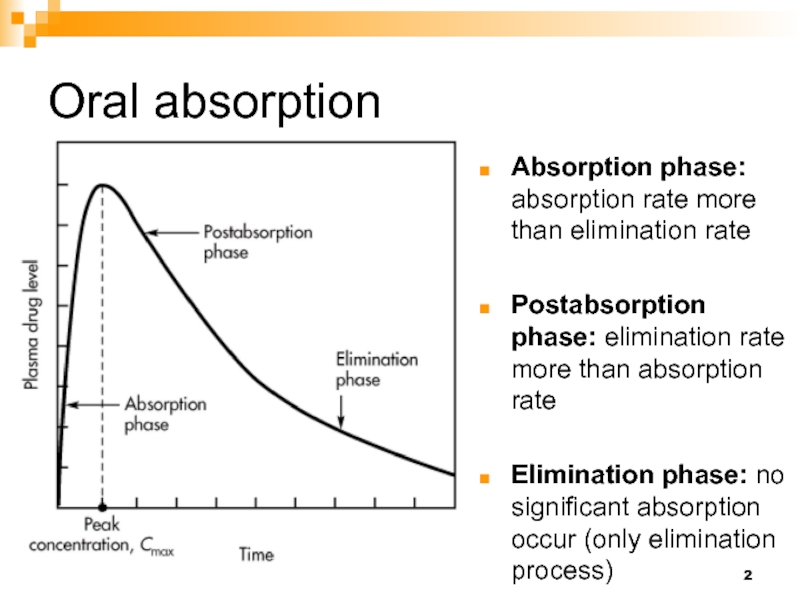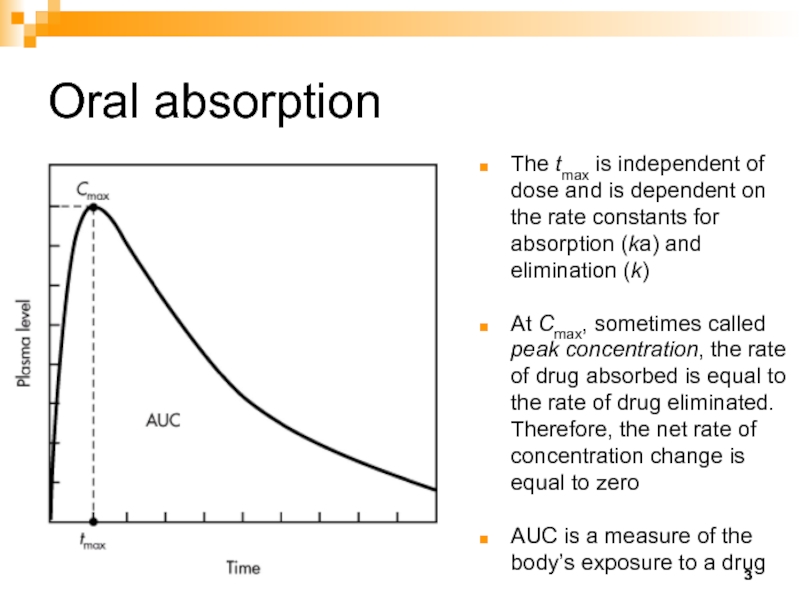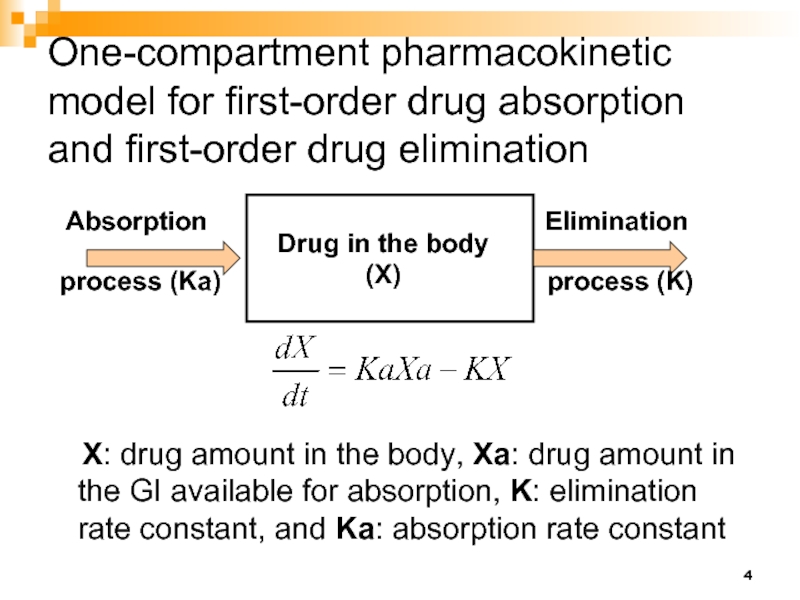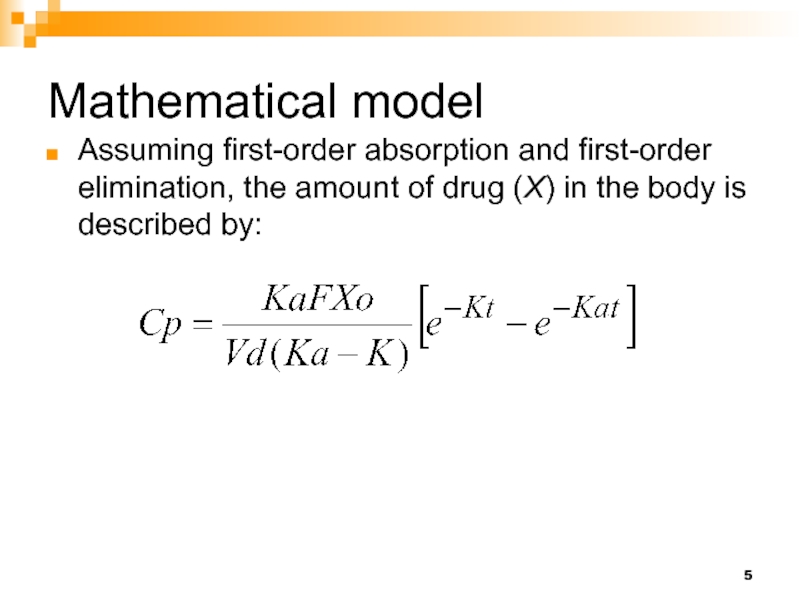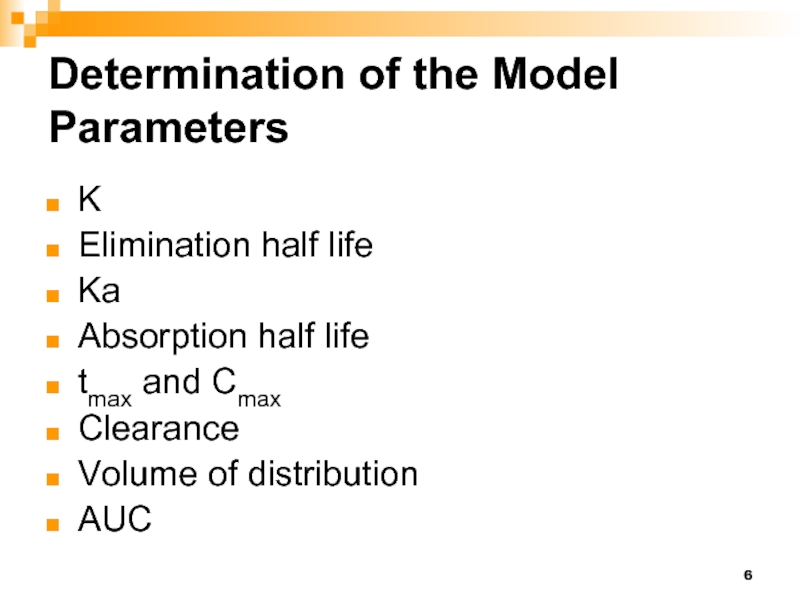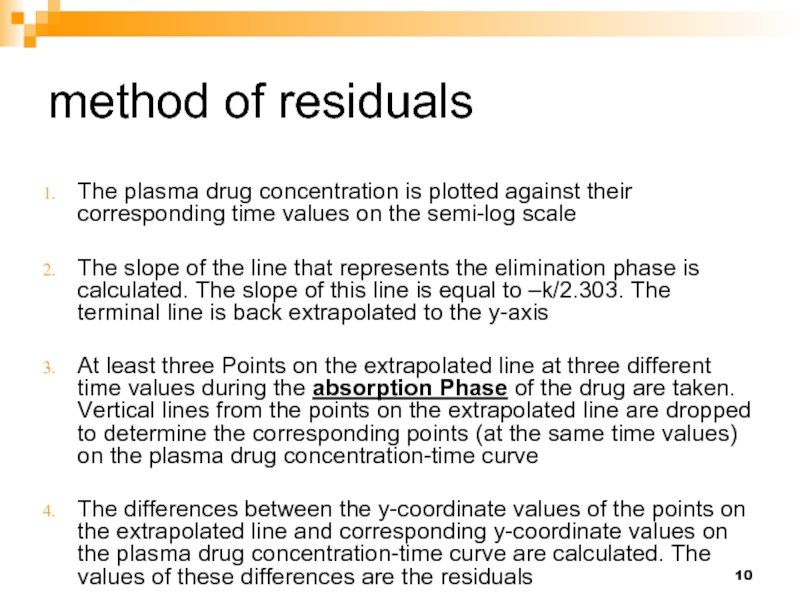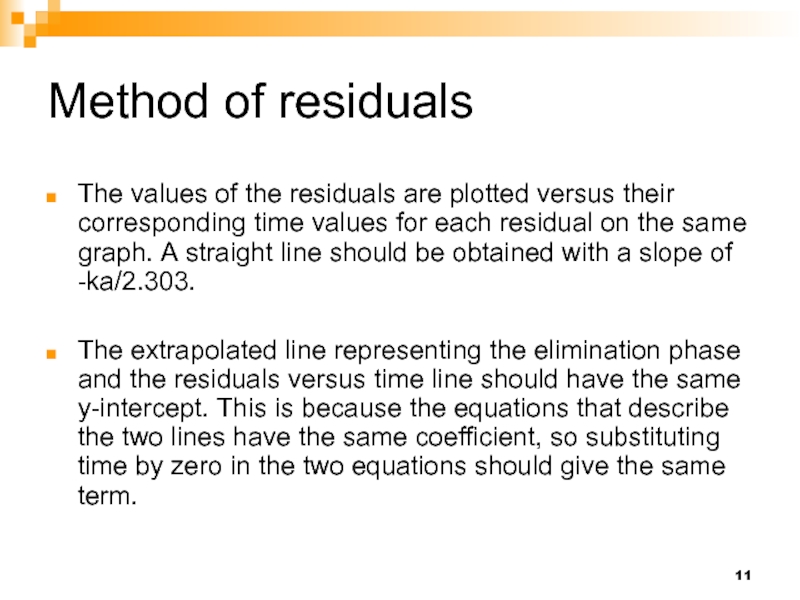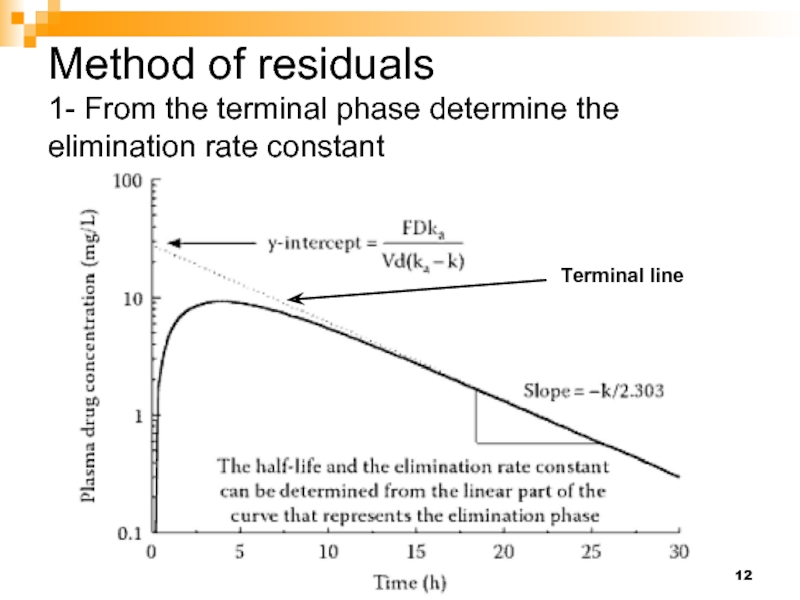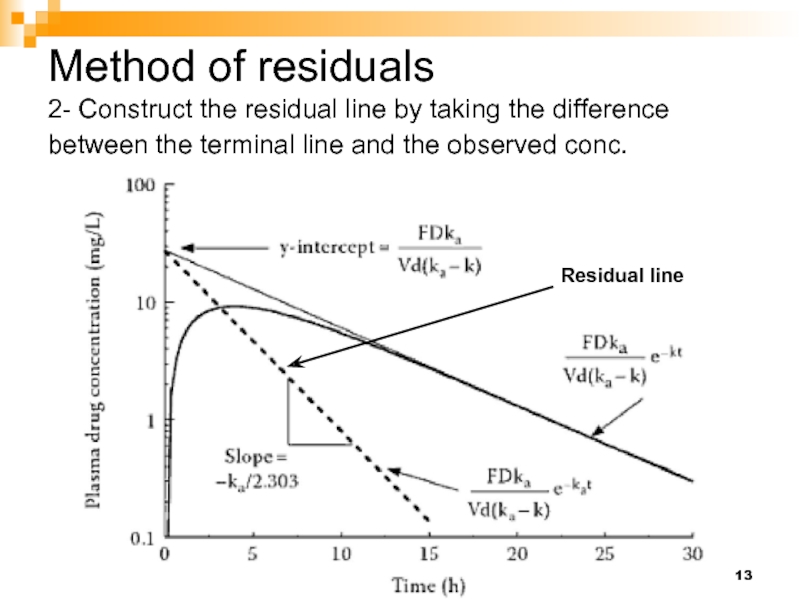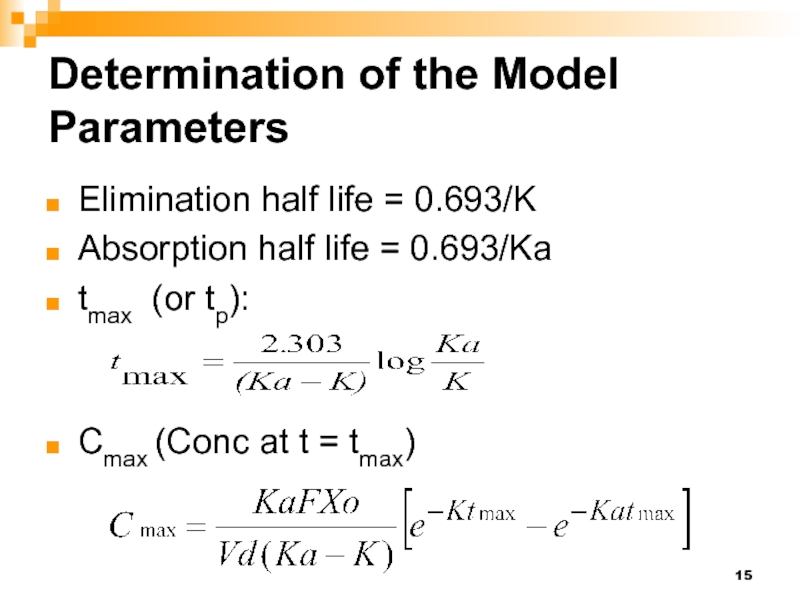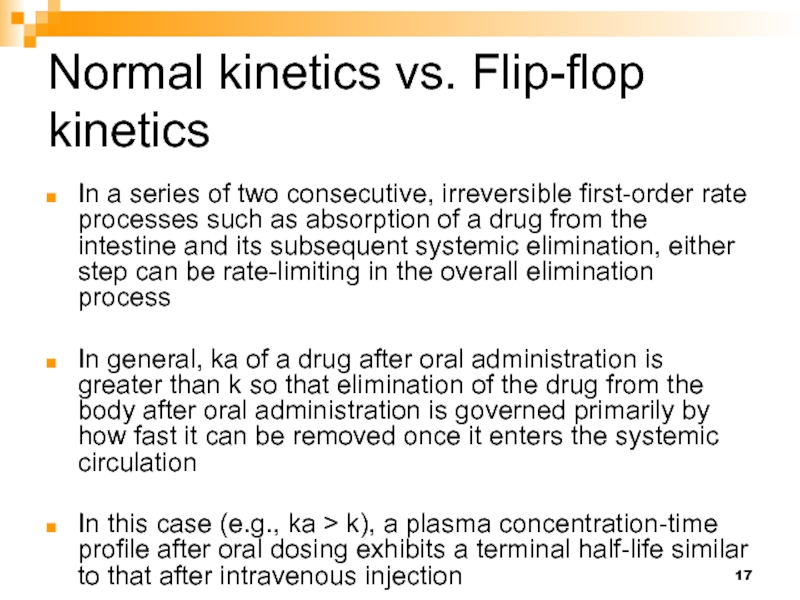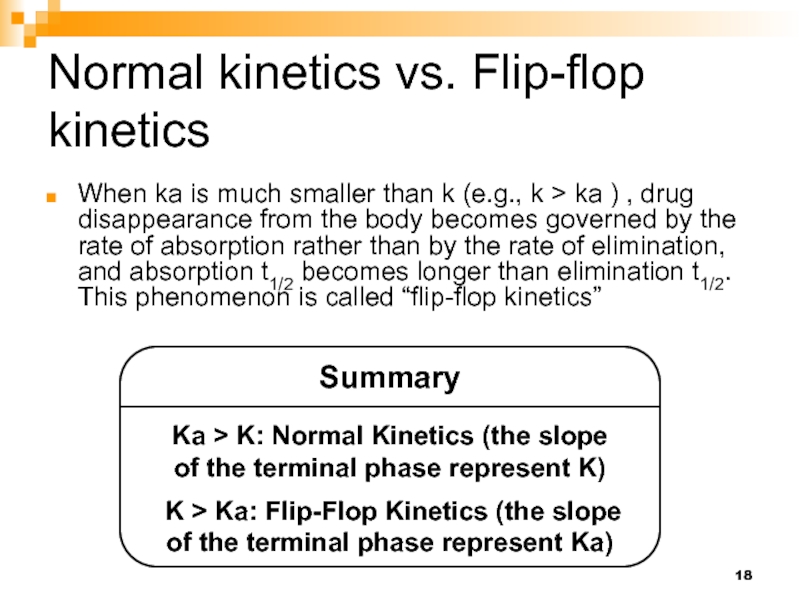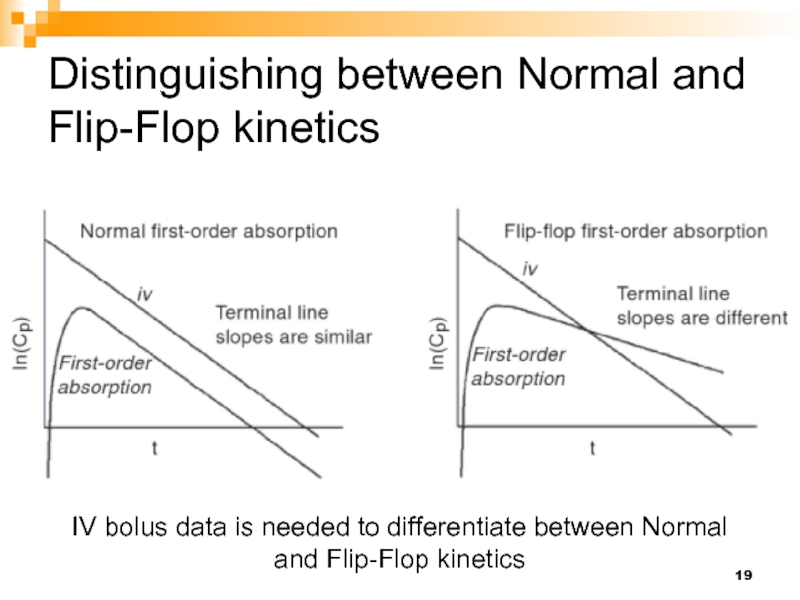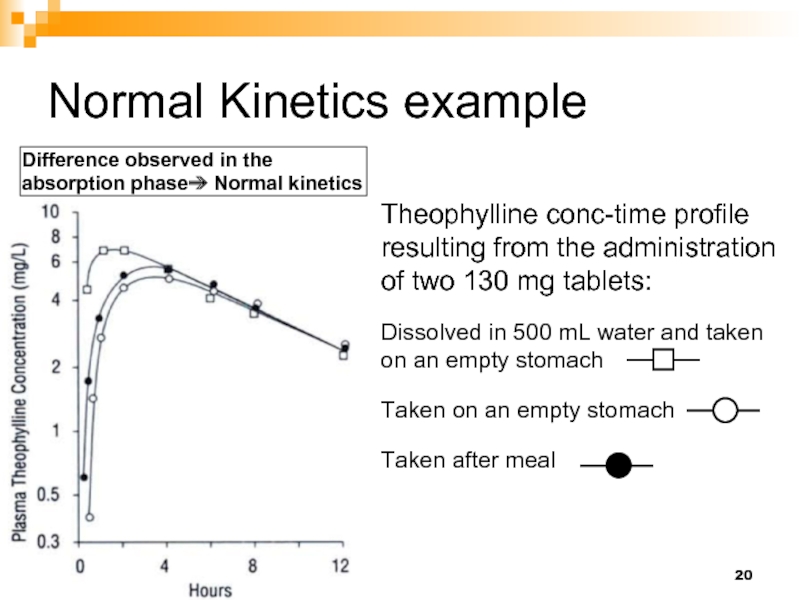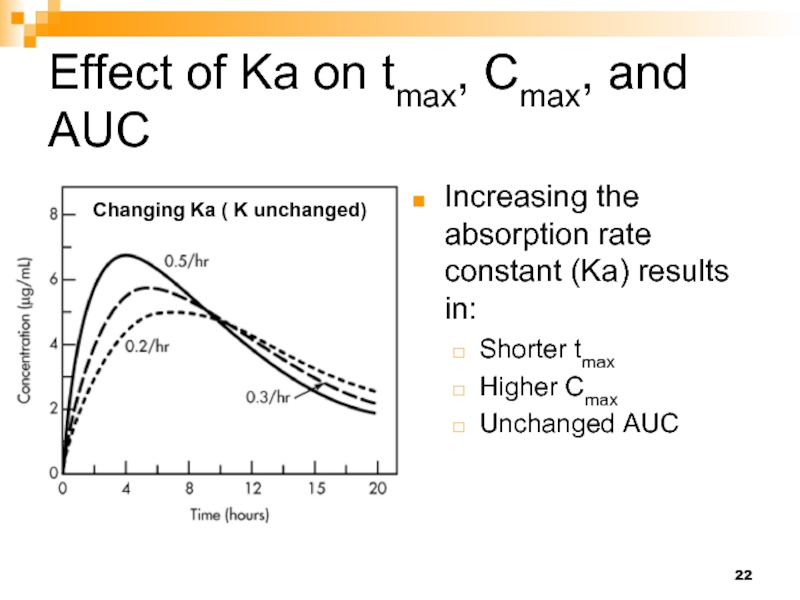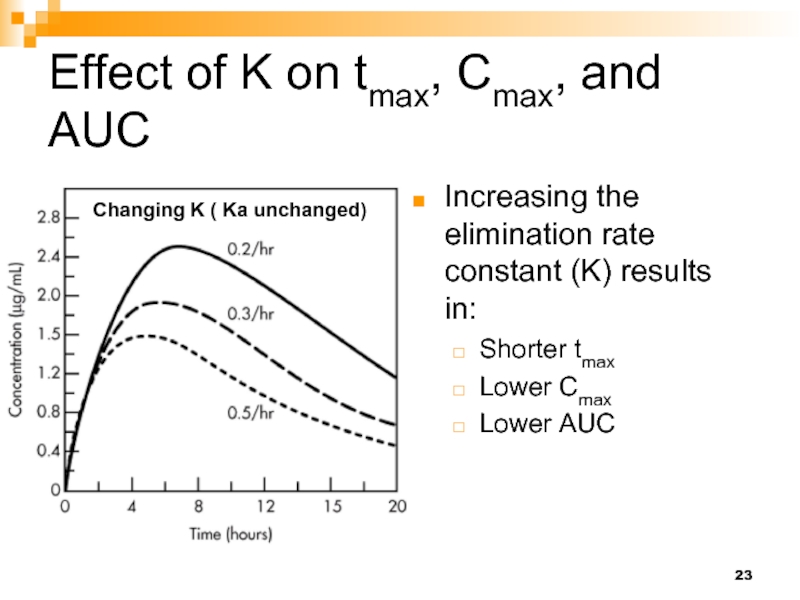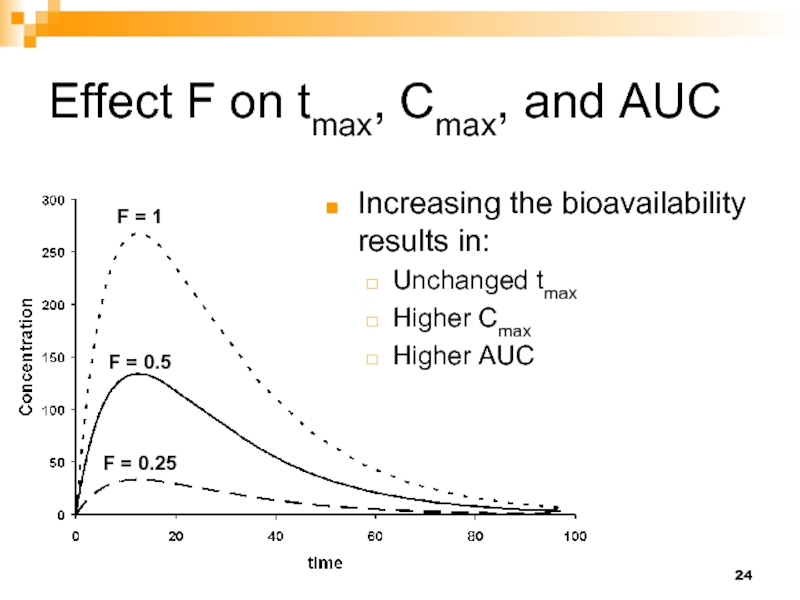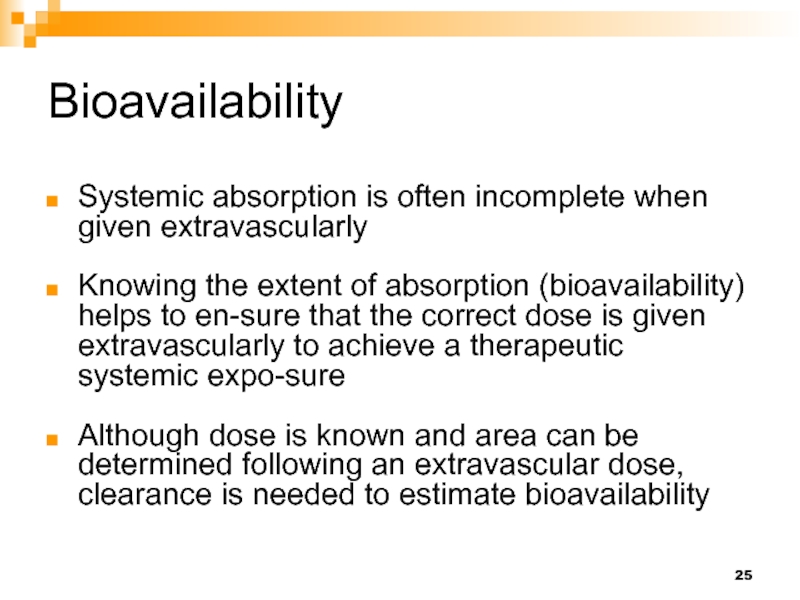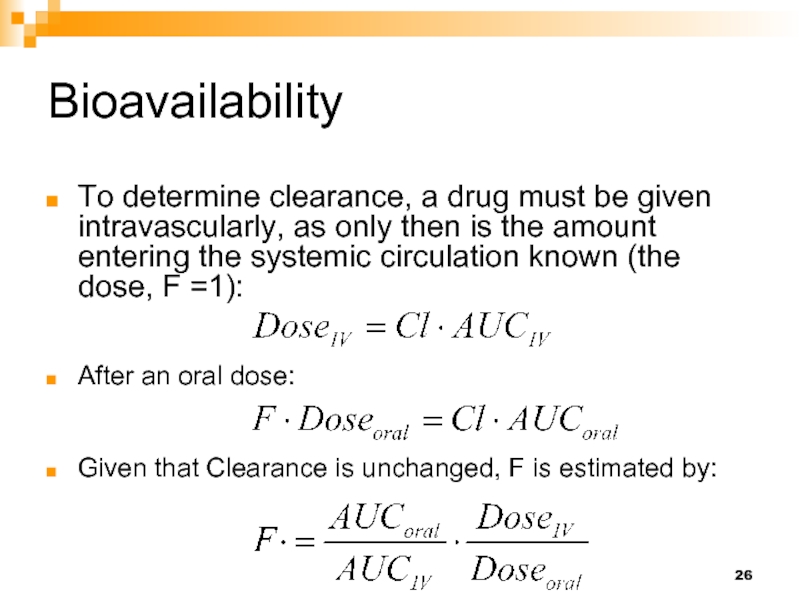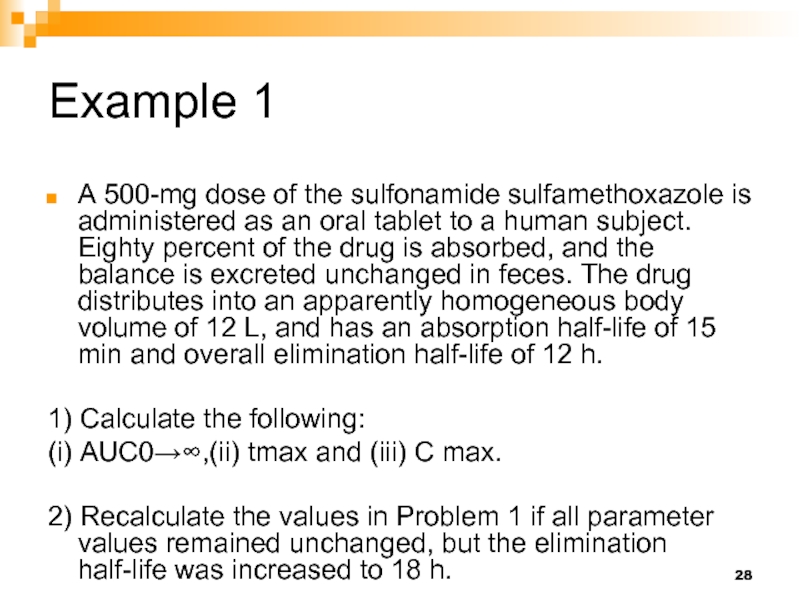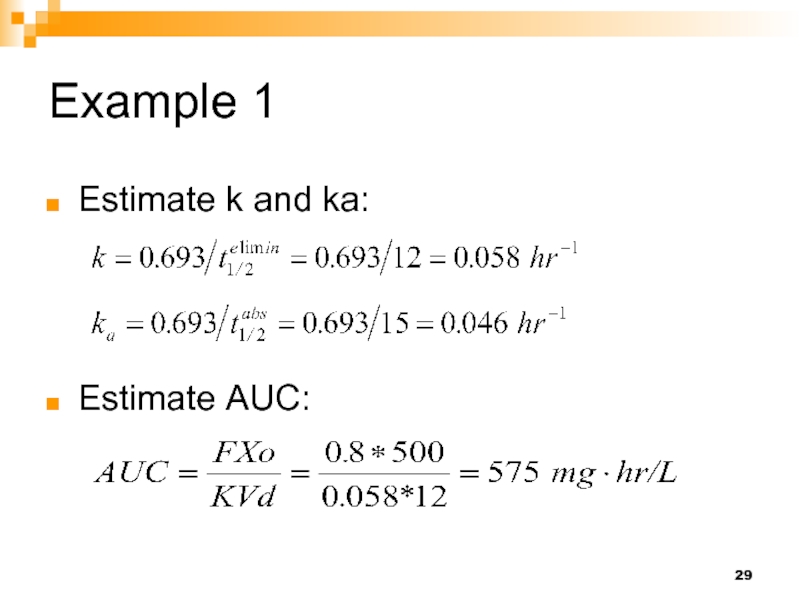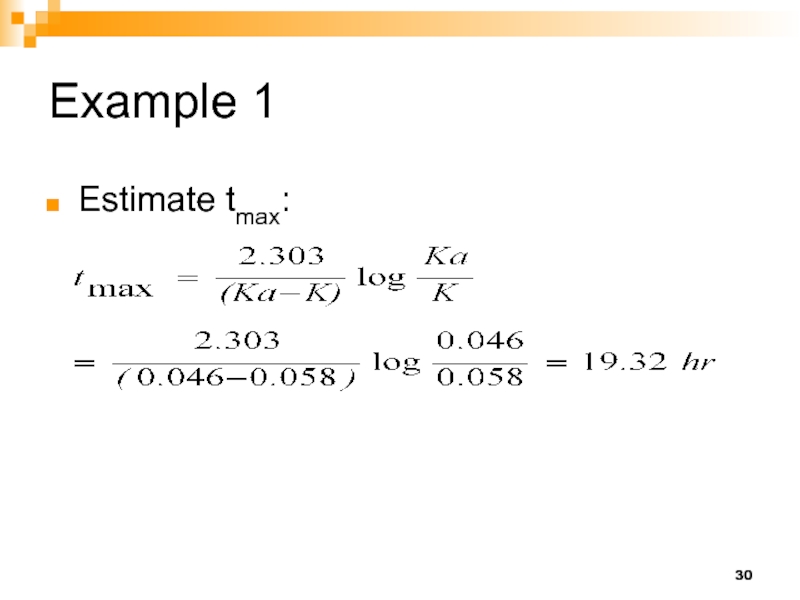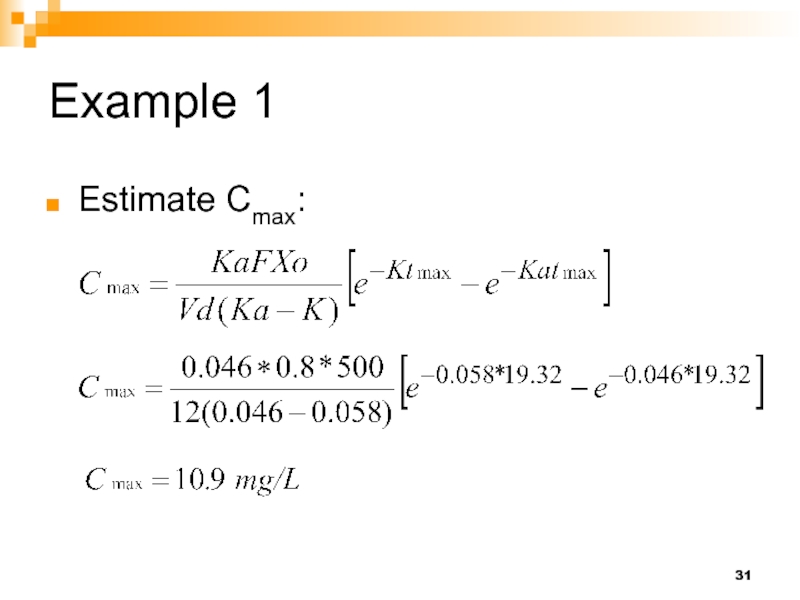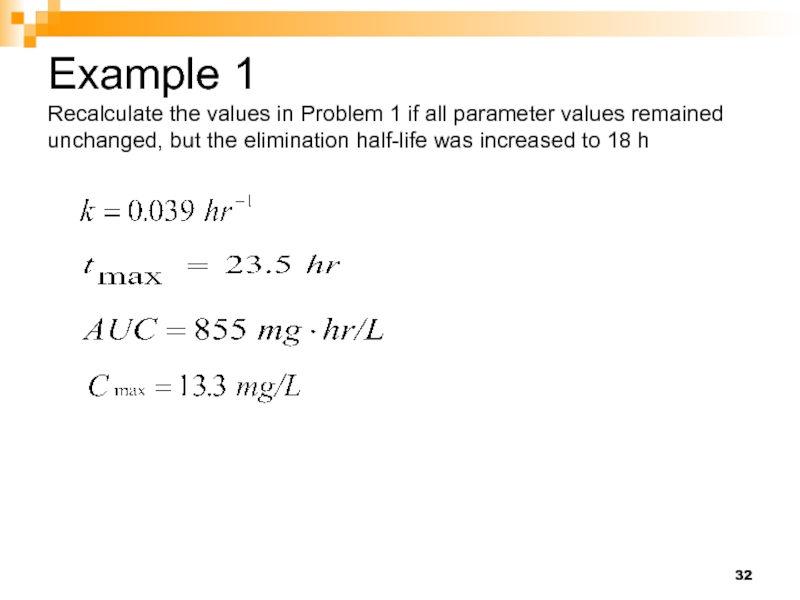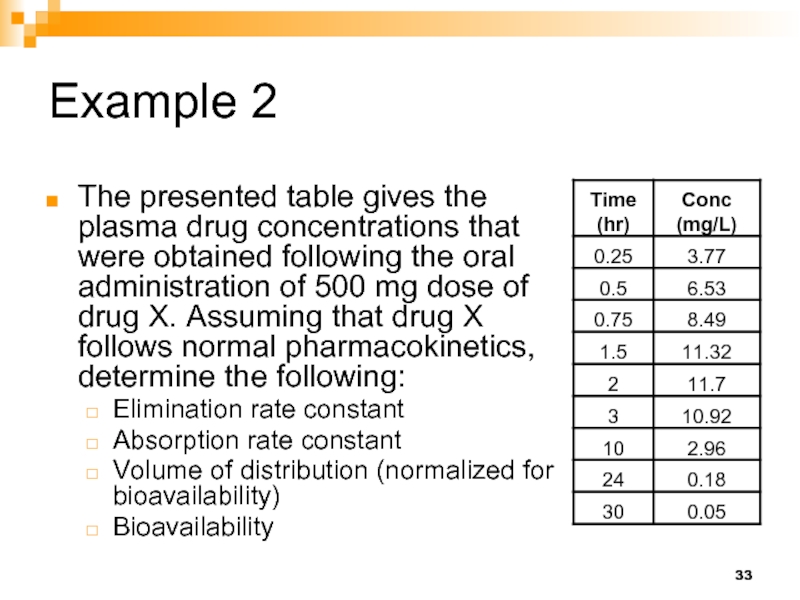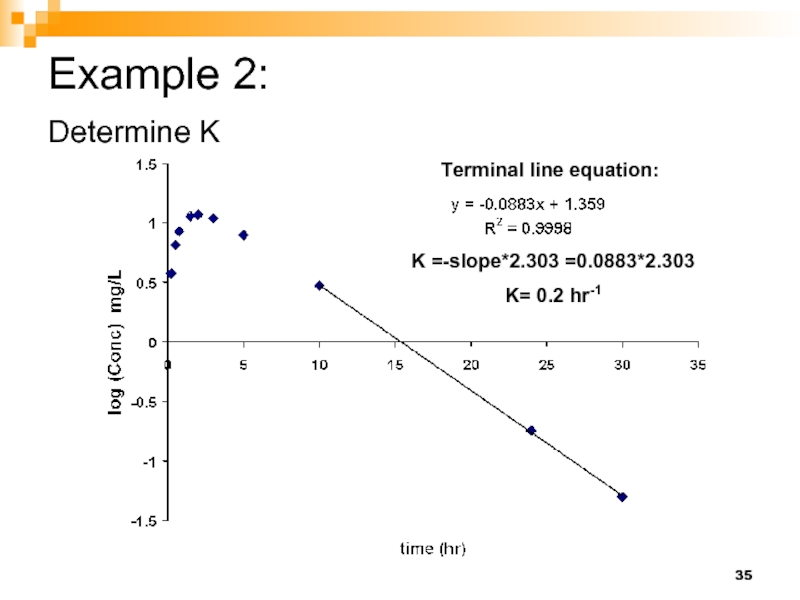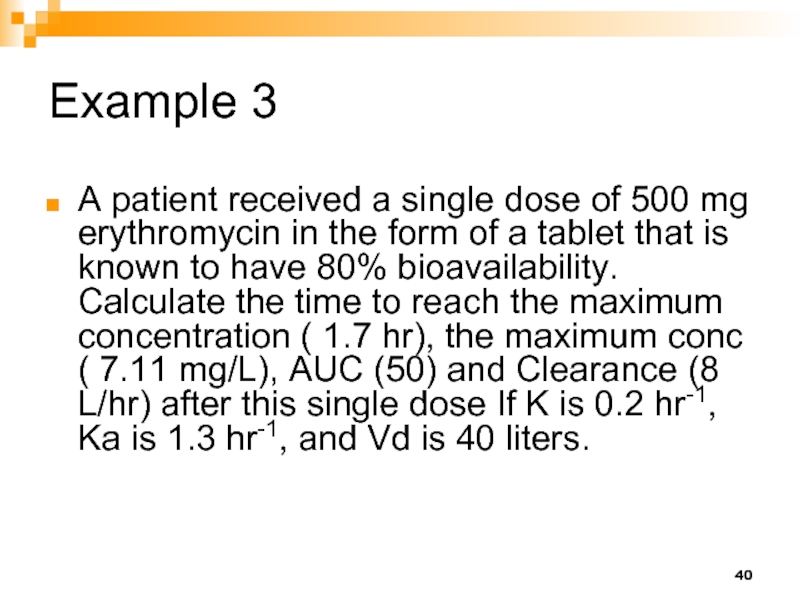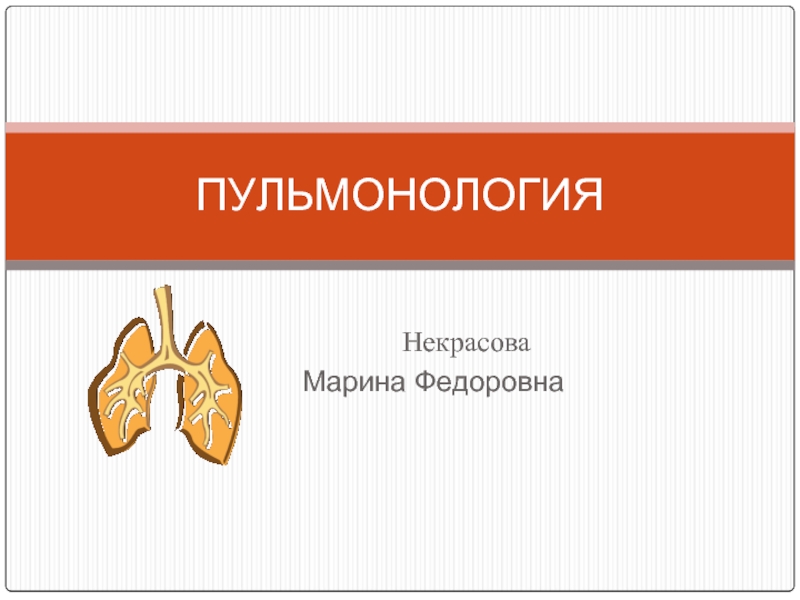- Главная
- Разное
- Дизайн
- Бизнес и предпринимательство
- Аналитика
- Образование
- Развлечения
- Красота и здоровье
- Финансы
- Государство
- Путешествия
- Спорт
- Недвижимость
- Армия
- Графика
- Культурология
- Еда и кулинария
- Лингвистика
- Английский язык
- Астрономия
- Алгебра
- Биология
- География
- Детские презентации
- Информатика
- История
- Литература
- Маркетинг
- Математика
- Медицина
- Менеджмент
- Музыка
- МХК
- Немецкий язык
- ОБЖ
- Обществознание
- Окружающий мир
- Педагогика
- Русский язык
- Технология
- Физика
- Философия
- Химия
- Шаблоны, картинки для презентаций
- Экология
- Экономика
- Юриспруденция
Pharmacokinetics of drug absorption презентация
Содержание
- 1. Pharmacokinetics of drug absorption
- 2. Oral absorption Absorption phase: absorption rate more
- 3. Oral absorption The tmax is independent of
- 4. One-compartment pharmacokinetic model for first-order drug absorption
- 5. Mathematical model Assuming first-order absorption and first-order
- 6. Determination of the Model Parameters K Elimination
- 7. Oral absorption
- 8. Terminal phase (elimination) Because in the Elimination
- 9. method of residuals The method of residuals
- 10. method of residuals The plasma drug concentration
- 11. Method of residuals The values of the
- 12. Method of residuals 1- From the
- 13. Method of residuals 2- Construct the
- 14. Method of residuals 3- Estimate the
- 15. Determination of the Model Parameters Elimination half
- 16. Determination of the Model Parameters Clearance Volume of distribution AUC
- 17. Normal kinetics vs. Flip-flop kinetics In a
- 18. Normal kinetics vs. Flip-flop kinetics When ka
- 19. Distinguishing between Normal and Flip-Flop kinetics IV
- 20. Normal Kinetics example Theophylline conc-time profile resulting
- 21. Flip-Flop kinetics example Penicillin G was adminstgered
- 22. Effect of Ka on tmax, Cmax, and
- 23. Effect of K on tmax, Cmax, and
- 24. Effect F on tmax, Cmax, and AUC
- 25. Bioavailability Systemic absorption is often incomplete when
- 26. Bioavailability To determine clearance, a drug must
- 27. Bioavailability If the IV and oral doses were equal, F can be calculated according to:
- 28. Example 1 A 500-mg dose of the
- 29. Example 1 Estimate k and ka: Estimate AUC:
- 30. Example 1 Estimate tmax:
- 31. Example 1 Estimate Cmax:
- 32. Example 1 Recalculate the values in Problem
- 33. Example 2 The presented table gives the
- 34. Example 2: Determine elimination phase Elimination phase
- 35. Example 2: Determine K Terminal line equation: K =-slope*2.303 =0.0883*2.303 K= 0.2 hr-1
- 36. Example 2: Extrapolate the terminal line to cross the y-axis
- 37. Example 2: Draw the residual line
- 38. Example 2: Determine Ka Residual line equation: Ka =-slope*2.303 =0.03814*2.303 Ka= 0.878 hr-1
- 39. Example 2 Volume of distribution (normalized for
- 40. Example 3 A patient received a single
Слайд 2Oral absorption
Absorption phase: absorption rate more than elimination rate
Postabsorption phase: elimination
Elimination phase: no significant absorption occur (only elimination process)
Слайд 3Oral absorption
The tmax is independent of dose and is dependent on
At Cmax, sometimes called peak concentration, the rate of drug absorbed is equal to the rate of drug eliminated. Therefore, the net rate of concentration change is equal to zero
AUC is a measure of the body’s exposure to a drug
Слайд 4One-compartment pharmacokinetic model for first-order drug absorption and first-order drug elimination
Drug in the body (X)
Absorption
process (Ka)
Elimination
process (K)
X: drug amount in the body, Xa: drug amount in the GI available for absorption, K: elimination rate constant, and Ka: absorption rate constant
Слайд 5Mathematical model
Assuming first-order absorption and first-order elimination, the amount of drug
Слайд 6Determination of the Model Parameters
K
Elimination half life
Ka
Absorption half life
tmax and Cmax
Clearance
Volume
AUC
Слайд 7Oral absorption
This portion measure the elimination process
This portion measure the absorption
Слайд 8Terminal phase (elimination)
Because in the Elimination phase no significant absorption occur
Слайд 9method of residuals
The method of residuals is a graphical method used
The absorption rate constant is larger than the elimination rate constant ,that is, Ka>K.
Both drug absorption and elimination follow first-order kinetics
The drug pharmacokinetics follow one-compartment model
The idea of the method of residuals is to characterize the drug elimination rate from the terminal elimination phase of the plasma drug concentration—time profile after a single oral administration. Then the contribution of the drug absorption rate and the drug elimination rate during the absorption phase can be separated
Слайд 10method of residuals
The plasma drug concentration is plotted against their corresponding
The slope of the line that represents the elimination phase is calculated. The slope of this line is equal to –k/2.303. The terminal line is back extrapolated to the y-axis
At least three Points on the extrapolated line at three different time values during the absorption Phase of the drug are taken. Vertical lines from the points on the extrapolated line are dropped to determine the corresponding points (at the same time values) on the plasma drug concentration-time curve
The differences between the y-coordinate values of the points on the extrapolated line and corresponding y-coordinate values on the plasma drug concentration-time curve are calculated. The values of these differences are the residuals
Слайд 11Method of residuals
The values of the residuals are plotted versus their
The extrapolated line representing the elimination phase and the residuals versus time line should have the same y-intercept. This is because the equations that describe the two lines have the same coefficient, so substituting time by zero in the two equations should give the same term.
Слайд 12Method of residuals 1- From the terminal phase determine the elimination
Terminal line
Слайд 13Method of residuals 2- Construct the residual line by taking the
Residual line
Слайд 14Method of residuals 3- Estimate the absorption rate constant from the
Residual line
Слайд 15Determination of the Model Parameters
Elimination half life = 0.693/K
Absorption half life
tmax (or tp):
Cmax (Conc at t = tmax)
Слайд 17Normal kinetics vs. Flip-flop kinetics
In a series of two consecutive, irreversible
In general, ka of a drug after oral administration is greater than k so that elimination of the drug from the body after oral administration is governed primarily by how fast it can be removed once it enters the systemic circulation
In this case (e.g., ka > k), a plasma concentration-time profile after oral dosing exhibits a terminal half-life similar to that after intravenous injection
Слайд 18Normal kinetics vs. Flip-flop kinetics
When ka is much smaller than k
Ka > K: Normal Kinetics (the slope
of the terminal phase represent K)
K > Ka: Flip-Flop Kinetics (the slope
of the terminal phase represent Ka)
Summary
Слайд 19Distinguishing between Normal and Flip-Flop kinetics
IV bolus data is needed to
Слайд 20Normal Kinetics example
Theophylline conc-time profile resulting from the administration of two
Dissolved in 500 mL water and taken on an empty stomach
Taken on an empty stomach
Taken after meal
Difference observed in the absorption phase➔ Normal kinetics
Слайд 21Flip-Flop kinetics example
Penicillin G was adminstgered IM as an:
Aqueous solution (I.M)
Procaine
Procaine penicillin in oil with aluminum monostearate (AP-I.M)
Difference observed in the terminal phase➔ Flip-flop kinetics
Слайд 22Effect of Ka on tmax, Cmax, and AUC
Increasing the absorption rate
Shorter tmax
Higher Cmax
Unchanged AUC
Changing Ka ( K unchanged)
Слайд 23Effect of K on tmax, Cmax, and AUC
Increasing the elimination rate
Shorter tmax
Lower Cmax
Lower AUC
Changing K ( Ka unchanged)
Слайд 24Effect F on tmax, Cmax, and AUC
F = 1
F = 0.5
F
Increasing the bioavailability results in:
Unchanged tmax
Higher Cmax
Higher AUC
Слайд 25Bioavailability
Systemic absorption is often incomplete when given extravascularly
Knowing the extent of
Although dose is known and area can be determined following an extravascular dose, clearance is needed to estimate bioavailability
Слайд 26Bioavailability
To determine clearance, a drug must be given intravascularly, as only
After an oral dose:
Given that Clearance is unchanged, F is estimated by:
Слайд 28Example 1
A 500-mg dose of the sulfonamide sulfamethoxazole is administered as
1) Calculate the following:
(i) AUC0→∞,(ii) tmax and (iii) C max.
2) Recalculate the values in Problem 1 if all parameter values remained unchanged, but the elimination half-life was increased to 18 h.
Слайд 32Example 1 Recalculate the values in Problem 1 if all parameter values
Слайд 33Example 2
The presented table gives the plasma drug concentrations that were
Elimination rate constant
Absorption rate constant
Volume of distribution (normalized for bioavailability)
Bioavailability

